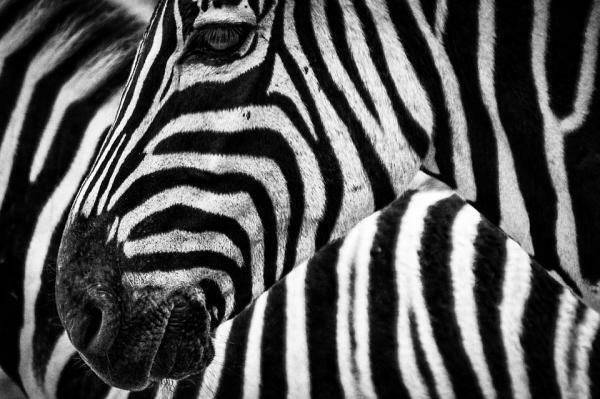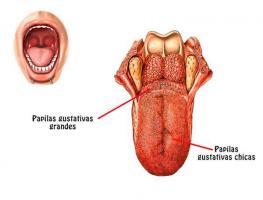Types of land mammals

Animals are incredible beings, capable of living both in water and on land, mammals being no exception. Along the centuries mammals have evolved, being able to survive both in terrestrial habitat and in aquatic habitat, although as a general rule there are a greater number of terrestrial mammals. To learn more about these data, in this lesson from a TEACHER we are going to talk about the different types of land mammals.
Index
- What are mammals?
- Monotremes, one of the types of mammals
- Marsupials, other land mammals
- Placental
What are mammals?
To begin this lesson we must first define what are mammals, to reinforce the knowledge about which beings make up this animal group and how they differ from others such as birds or fish.
Mammals are a very varied series of animals, but they have a number of features that make them unique, some of these characteristics being the following:
- They are vertebrates, that is, they have a backbone.
- They are animals of hot blood, being able to regulate their body temperature without taking into account that of the environment.
- They are amniotes, since the embryo develops four envelopes.
- They are very adaptable, which is why there are both marine and terrestrial animals.
- Possess mammary glands to feed the young.
These are the characteristics that almost all mammals share, since being so varied animals it is very difficult to define a series of common characteristics. The differences between mammals are best seen when talking about the orders in which they are divided, existing in all of them terrestrial mammals. The three orders that form mammals are the following:
- Monotremes
- Marsupials
- Placental

Image: Slideshare
Monotremes, one of the types of mammals.
The monotremes are an order of mammals whose peculiarity is that maintain primitive characteristics, having mechanisms similar to reptiles such as the cloaca or oviparous reproduction. There are very few species of monotremes, being the least common mammals of the three classes of mammals, all of them being terrestrial species. The 5 monotreme species are as follows:
- Platypus: It is a semi-aquatic animal, that is, it can live both on land and in water, although it is considered a land animal.
- Short-nosed echidna: it is a terrestrial animal located in Australia, characterized by its body full of spikes, its short snout and its long tongue.
- Long-nosed echidnas: There are three species of long-snouted echidna, differing in the place they occupy in Papua New Guinea. All three species are land mammals.

Image: From my desk drawers
Marsupials, other land mammals.
Marsupials are an order of mammals characterized by their offspring having a short development within the mother's womb and complete their growth within a bag called marsupio.
There are some 270 species marsupials today, most of them living in Australia, and a few in America. All species of marsupials are terrestrial, there being no marine. Like all groups of animals, marsupials also have a subdivision, depending on their habitat and their particular characteristics, the current orders of marsupials are as follows:
- Didelfimorphs: They are the majority of marsupials that inhabit the American continent today. There are 92 species in this group and their name may vary depending on their location, although the most common is that of opossum.
- Paucituberculates: In this group, most species are already extinct, the only survivors being those belonging to the Caenolestidae family, that is, the cunchos mice.
- Microbioteriums: They are a type of marsupials that inhabit Chile and Argentina, and whose only current species is the little monkey.
- Diprotodonts: It is one of the groups of marsupials with the greatest diversity of species, characterized by having two incisors in the jaw. Some of the most famous species are kangaroos and koalas.
- Dasiuromorphs: A group of marsupials that inhabit Oceania, an example of which is the numbat and the Tasmanian devil.
- Peramelemorphs: They are marsupials characterized by being omnivores, the most famous species of this group are the bandicoots.
- Notorictreromorphs: They are marsupials very similar to placental moles, being called marsupial moles.

Image: the animalopedia
Placental.
To conclude with this lesson on the types of land mammals, we must talk about the placentals, the most diverse group and, therefore, the one with the most species of marine and terrestrial animals.
The placentals are characterized by their offspring growing in the mother's womb and feeding on the placenta. There are more than 5000 species of this type of mammal, grouped in numerous orders, which are the following:
- Hiracoids: They are mammals that inhabit the African continent and the Arabian Peninsula. There are about 6 species of this class, being known as damans.
- Proboscideans: A group of very old placentals of which only three species have survived, all of them classes of elephants.
- Folidotes: Some animals full of scales of which there are 8 species, all of them called pangolins.
- Toothless: A series of American mammals including anteaters and armadillos.
- Tubulidentate: A group of placentals of which there is only one living species, the aardvark.
- Dermopters: Two species of American mammals that are called colugos.
- Insectivores: Mammals characterized by their insect-based diet, one example is hedgehogs.
- Chiroptera: They are mammals whose front legs are wings. They are one of the most abundant groups, with more than 1000 species, the most famous being the bats.
- Lagomorphs: Mammals characterized by having two long upper incisors. The best known are rabbits and hares.
- Rodents: The largest order of mammals, with more than 2000 species. Some famous rodents are mice or squirrels, there are no marine species, but there are some that can live in fresh water.
- Carnivores: They are mammals characterized by eating meat, some examples being felines and canines. In this group there are a few marine species, although most are terrestrial.
- Perissodactyls: Mammals whose legs end in hooves, such as horses.
- Artiodactyls: A group of mammals that inhabit all continents except Antarctica. Some examples are giraffes and cows.
- Primates: The group of mammals to which we humans belong.

Image: SlideShare
If you want to read more articles similar to Types of land mammals, we recommend that you enter our category of biology.



